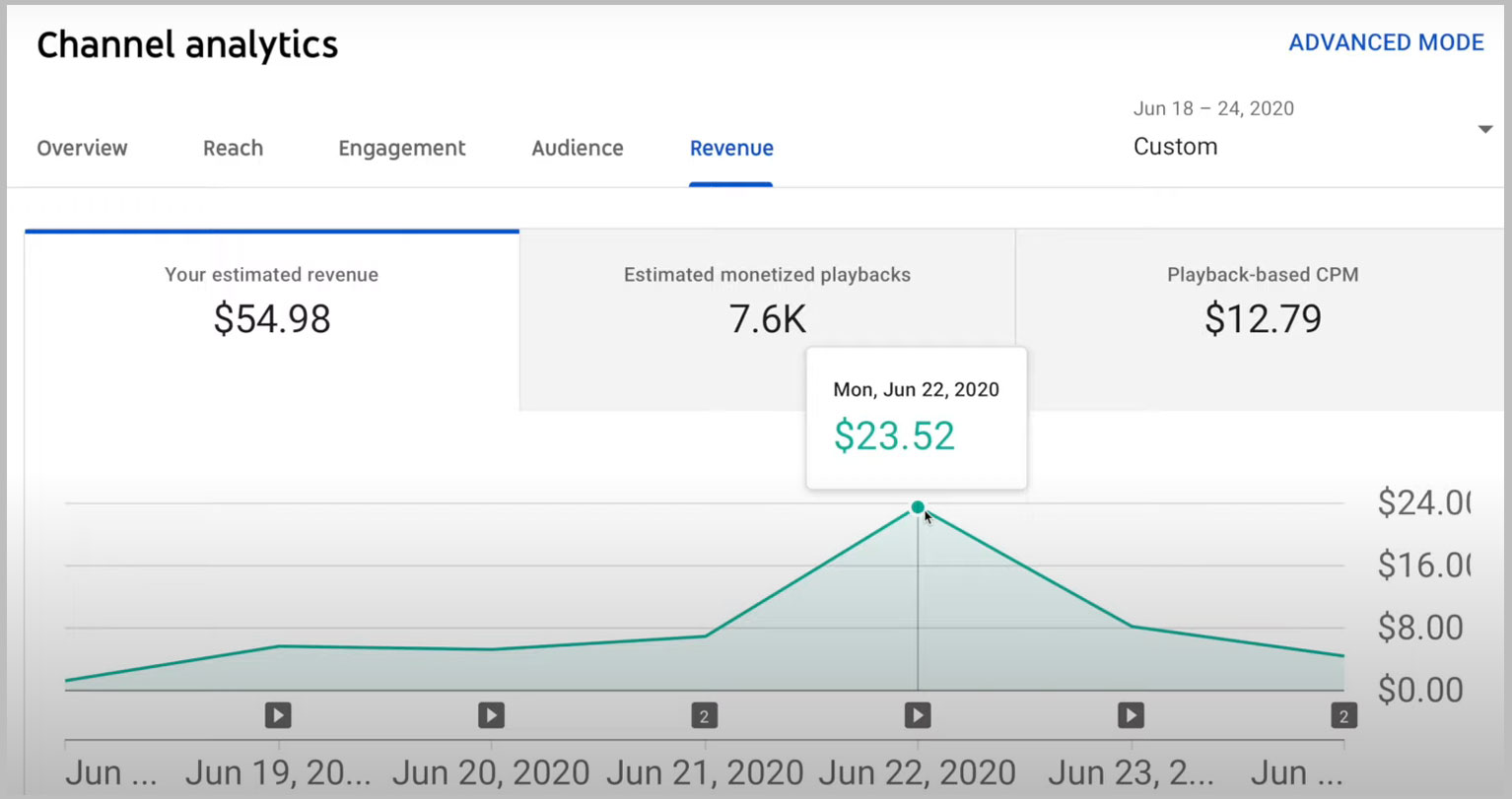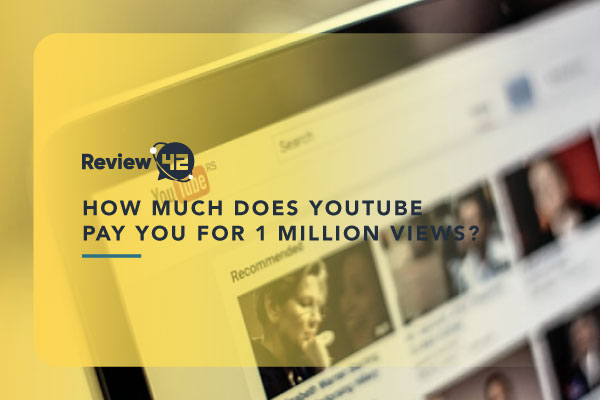Cracking the Code: How YouTube’s Algorithm Impacts Ad Revenue
YouTube’s algorithm plays a crucial role in determining ad revenue for creators. The platform’s complex system takes into account various factors, including watch time, engagement, and audience retention, to decide which videos to promote and how much to pay creators. Understanding how the algorithm works is essential for maximizing earnings on the platform.
Watch time is a critical factor in YouTube’s algorithm, as it indicates how engaging and relevant a video is to viewers. Creators can optimize their content to increase watch time by using attention-grabbing titles, thumbnails, and tags, as well as creating high-quality, informative, and entertaining content. Additionally, audience retention is vital, as it shows how well a video holds viewers’ attention throughout. Creators can improve audience retention by using techniques such as storytelling, humor, and interactive elements.
Engagement is another key factor in YouTube’s algorithm, as it measures how viewers interact with a video. Creators can increase engagement by encouraging viewers to like, comment, and share their videos. This can be achieved by asking questions, hosting Q&A sessions, and creating content that sparks conversation and debate. Furthermore, creators can use YouTube Analytics to track their engagement metrics and adjust their strategy accordingly.
While the exact formula for YouTube’s algorithm is not publicly known, creators can use various tools and strategies to optimize their content and increase earnings. For example, using keywords strategically in titles, descriptions, and tags can improve video visibility and attract more views. Additionally, collaborating with other creators, influencers, or brands can expand a channel’s reach and increase ad revenue.
As a creator, understanding how YouTube’s algorithm impacts ad revenue is crucial for success on the platform. By optimizing content for watch time, engagement, and audience retention, creators can increase their earnings and build a loyal following. While the algorithm is constantly evolving, staying up-to-date with the latest best practices and strategies can help creators stay ahead of the game and maximize their earnings.
The Anatomy of a Viral Video: What Makes a Video Go from 0 to 35 Million Views
Creating a viral video is the holy grail of YouTube success, and understanding what makes a video go viral is crucial for creators looking to maximize their earnings. While there is no guaranteed formula for creating a viral video, analyzing the characteristics of successful videos can provide valuable insights.
One of the most critical factors in creating a viral video is the title. A catchy and attention-grabbing title can make all the difference in enticing viewers to click on a video. For example, the viral video “David After Dentist” has a simple yet effective title that perfectly captures the content of the video. Similarly, the title of the video “Gangnam Style” by PSY is catchy and memorable, making it easy for viewers to remember and share.
Thumbnails are another essential element in creating a viral video. A well-designed thumbnail can make a video stand out in a crowded YouTube feed, increasing the likelihood of clicks and views. For example, the viral video “Keyboard Cat” has a simple yet eye-catching thumbnail that perfectly captures the humor and creativity of the video.
Tags are also crucial in creating a viral video, as they help YouTube’s algorithm understand the content and context of the video. Using relevant and specific tags can increase the visibility of a video, making it more likely to appear in search results and recommendations. For example, the viral video “Charlie Bit My Finger” uses tags such as “funny,” “kids,” and “brothers,” making it easy for viewers to find and share.
Content quality is also essential in creating a viral video. High-quality, engaging, and informative content can make a video stand out from the crowd, increasing the likelihood of shares and views. For example, the viral video “The Evolution of Dance” by Judson Laipply is a high-quality video that showcases the creator’s talent and creativity, making it easy for viewers to share and recommend.
While creating a viral video is not an exact science, understanding the characteristics of successful videos can provide valuable insights for creators looking to maximize their earnings. By using catchy titles, eye-catching thumbnails, relevant tags, and high-quality content, creators can increase the likelihood of their video going viral and earning more from their YouTube views.
Monetizing Your YouTube Channel: A Step-by-Step Guide
Monetizing a YouTube channel can be a lucrative way to earn money from your content, but it requires careful planning and execution. To help you get started, we’ve put together a step-by-step guide on how to monetize your YouTube channel.
Step 1: Enable Monetization on Your YouTube Channel
To monetize your YouTube channel, you need to enable monetization on your account. To do this, go to your YouTube account settings and click on the “Monetization” tab. From there, you’ll need to agree to YouTube’s terms and conditions and set up your payment information.
Step 2: Set Up AdSense
Once you’ve enabled monetization on your YouTube channel, you’ll need to set up AdSense. AdSense is a program that allows you to earn money from ads displayed on your YouTube videos. To set up AdSense, go to the AdSense website and sign up for an account. You’ll need to provide some basic information about yourself and your YouTube channel.
Step 3: Meet YouTube’s Requirements
To monetize your YouTube channel, you’ll need to meet YouTube’s requirements. These requirements include having at least 1,000 subscribers and 4,000 watch hours in the past 12 months. You’ll also need to comply with YouTube’s community guidelines and terms of service.
Step 4: Choose Your Monetization Options
Once you’ve met YouTube’s requirements, you can choose your monetization options. These options include displaying ads on your videos, using YouTube Premium, and using Super Chat. You can also use sponsorships and merchandise sales to earn money from your YouTube channel.
Step 5: Track Your Earnings
Finally, you’ll need to track your earnings from your YouTube channel. You can do this by using YouTube Analytics, which provides detailed information about your earnings, views, and engagement. You can also use AdSense to track your earnings from ads displayed on your YouTube videos.
By following these steps, you can monetize your YouTube channel and start earning money from your content. Remember to always comply with YouTube’s policies and guidelines, and to provide high-quality content to your viewers.
How Much Does 35 Million Views on YouTube Really Pay?
When it comes to monetizing a YouTube channel, one of the most common questions creators ask is “how much does 35 million views on YouTube really pay?” The answer to this question depends on various factors, including the niche, audience engagement, and ad click-through rates.
According to industry benchmarks, a video with 35 million views on YouTube can earn anywhere from $50,000 to $200,000 in ad revenue, depending on the niche and audience engagement. However, this is just an estimate, and actual earnings can vary significantly.
YouTube’s revenue sharing model is based on a cost-per-click (CPC) model, where creators earn a portion of the ad revenue generated by their videos. The CPC model takes into account various factors, including the niche, audience engagement, and ad click-through rates.
For example, a video in the gaming niche with 35 million views and a high engagement rate (e.g., likes, comments, shares) can earn more than a video in the beauty niche with the same number of views but lower engagement. Similarly, a video with a high ad click-through rate (CTR) can earn more than a video with a low CTR.
Additionally, YouTube’s algorithm also plays a significant role in determining ad revenue. The algorithm takes into account various factors, including watch time, audience retention, and engagement, to determine which videos to promote and how much to pay creators.
To give you a better idea of how much 35 million views on YouTube can pay, here are some estimates based on industry benchmarks:
* Gaming niche: $100,000 to $200,000
* Beauty niche: $50,000 to $100,000
* Vlogging niche: $30,000 to $70,000
* Educational niche: $20,000 to $50,000
Keep in mind that these are just estimates, and actual earnings can vary significantly depending on various factors, including the niche, audience engagement, and ad click-through rates.
Maximizing Your Earnings: Tips for YouTube Creators
As a YouTube creator, maximizing your earnings is crucial to sustaining a successful channel. Here are some actionable tips to help you increase your earnings, including strategies for increasing watch time, boosting engagement, and leveraging sponsorships and merchandise sales.
1. Optimize Your Video Titles and Thumbnails
Your video title and thumbnail are the first things viewers see when browsing YouTube. Make sure they are attention-grabbing and accurately reflect the content of your video. Use keywords relevant to your niche to improve discoverability.
2. Increase Watch Time with Engaging Content
Watch time is a critical factor in YouTube’s algorithm, and increasing it can lead to higher earnings. Create engaging content that keeps viewers hooked, such as tutorials, reviews, or vlogs. Use storytelling techniques and emotional connections to make your content more relatable.
3. Boost Engagement with Comments and Community Building
Engagement is another key factor in YouTube’s algorithm, and boosting it can lead to higher earnings. Respond to comments on your videos, ask for feedback, and create a community around your channel. Use social media to promote your channel and engage with your audience.
4. Leverage Sponsorships and Merchandise Sales
Sponsorships and merchandise sales can be a lucrative way to monetize your YouTube channel. Partner with brands relevant to your niche to create sponsored content, and sell merchandise such as t-shirts, hats, or other products. Use affiliate marketing to earn commissions from sales.
5. Utilize YouTube Analytics to Track Your Performance
YouTube Analytics provides valuable insights into your channel’s performance, including views, engagement, and earnings. Use this data to track your progress, identify areas for improvement, and adjust your strategy accordingly.
By implementing these strategies, you can maximize your earnings on YouTube and turn your views into dollars. Remember to stay up-to-date with the latest trends and best practices in YouTube monetization to stay ahead of the game.
The Role of YouTube Premium and Super Chat in Monetization
YouTube Premium and Super Chat are two features that can contribute to a creator’s earnings on the platform. YouTube Premium is a paid subscription service that offers ad-free videos, exclusive content, and offline playback. Super Chat is a live streaming feature that allows viewers to pay for their messages to be highlighted in live chat.
YouTube Premium can increase a creator’s earnings by providing a new revenue stream. Creators can earn a share of the revenue generated by YouTube Premium subscribers who watch their content. This can be a significant source of income, especially for creators who produce high-quality, engaging content that appeals to a wide audience.
Super Chat can also increase a creator’s earnings by providing a new way for viewers to engage with their content. Viewers can pay for their messages to be highlighted in live chat, which can increase the visibility of their messages and encourage more viewers to participate in the live stream. This can lead to increased engagement and revenue for the creator.
The benefits of YouTube Premium and Super Chat for creators include:
* Increased revenue: YouTube Premium and Super Chat can provide a new revenue stream for creators, which can increase their earnings and help them sustain their channel.
* Exclusive content: YouTube Premium allows creators to produce exclusive content that is only available to subscribers. This can help creators to differentiate their content and attract more viewers.
* Live streaming: Super Chat allows creators to live stream their content and interact with their viewers in real-time. This can help creators to build a community around their channel and increase engagement.
Overall, YouTube Premium and Super Chat can be valuable tools for creators who want to increase their earnings and build a loyal following on the platform.
Case Studies: Real-Life Examples of Successful YouTube Monetization
To illustrate the effectiveness of the monetization strategies discussed in this article, let’s take a look at some real-life examples of successful YouTube creators who have turned their views into dollars.
Case Study 1: PewDiePie
Felix Kjellberg, aka PewDiePie, is a Swedish YouTuber who has been one of the most successful creators on the platform. With over 100 million subscribers and billions of views, PewDiePie has built a massive following and has been able to monetize his channel through ads, sponsorships, and merchandise sales.
Case Study 2: Shane Dawson
Shane Dawson is an American YouTuber who has built a massive following through his documentary-style videos and conspiracy theories. With over 40 million subscribers and billions of views, Dawson has been able to monetize his channel through ads, sponsorships, and merchandise sales.
Case Study 3: Jeffree Star
Jeffree Star is an American beauty YouTuber who has built a massive following through his makeup tutorials and product reviews. With over 15 million subscribers and billions of views, Star has been able to monetize his channel through ads, sponsorships, and merchandise sales.
What do these case studies have in common? They all have a strong understanding of their audience and have been able to create content that resonates with them. They have also been able to leverage their audience to build successful brands and monetize their channels through various means.
By studying these case studies, we can learn valuable lessons about how to build a successful YouTube channel and turn our views into dollars.
Conclusion: Turning Your YouTube Views into Dollars
In conclusion, turning your YouTube views into dollars requires a deep understanding of YouTube’s algorithm, creating engaging content, and leveraging monetization strategies. By following the tips and strategies outlined in this article, you can increase your earnings and turn your YouTube views into a sustainable income stream.
Remember, YouTube’s algorithm is constantly evolving, and it’s essential to stay up-to-date with the latest trends and best practices to maximize your earnings. By focusing on creating high-quality, engaging content and leveraging monetization strategies such as sponsorships, merchandise sales, and YouTube Premium, you can turn your YouTube views into dollars.
Additionally, understanding how YouTube’s algorithm impacts ad revenue and optimizing your content to increase earnings is crucial to maximizing your YouTube earnings. By analyzing the characteristics of viral videos and creating content that resonates with your audience, you can increase your earnings and turn your YouTube views into a sustainable income stream.
Finally, by studying the case studies of successful YouTube creators who have monetized their channels effectively, you can learn valuable lessons about how to build a successful YouTube channel and turn your views into dollars.
In summary, turning your YouTube views into dollars requires a combination of creating engaging content, leveraging monetization strategies, and understanding YouTube’s algorithm. By following the tips and strategies outlined in this article, you can increase your earnings and turn your YouTube views into a sustainable income stream.








